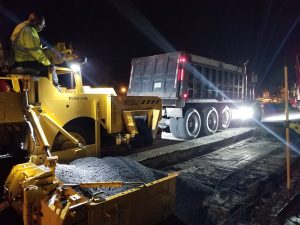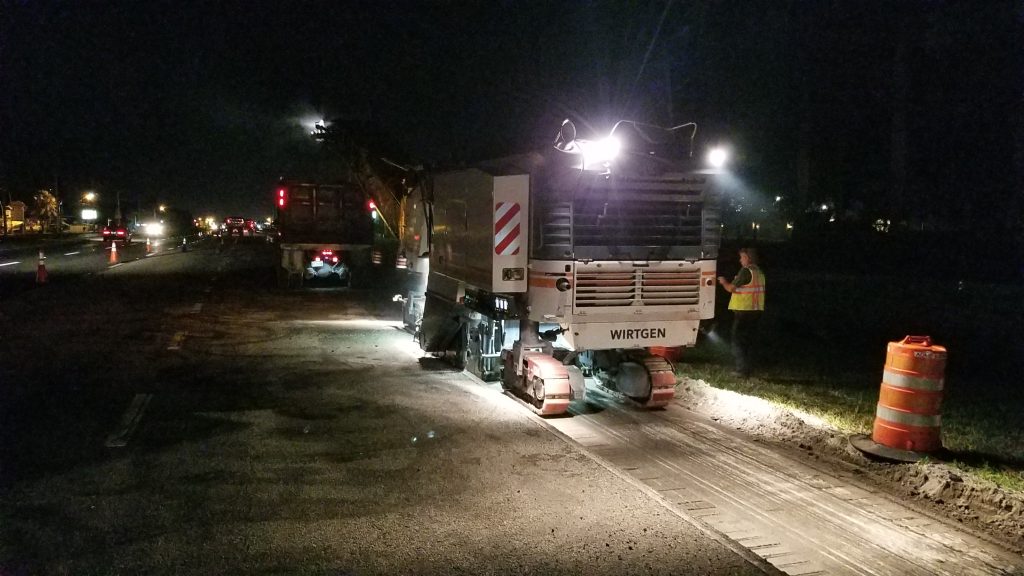 What is Asphalt Road Widening?
What is Asphalt Road Widening?
Asphalt road widening is very much what it sounds like. It is the process of extending the edges of a roadway in order to allow extra lanes for vehicles. Road widening typically leads to improved traffic safety and vehicle capacity.
How Asphalt Road Widening is Done
- 1 The road must first be surveyed in order to confirm that a road widening is plausible. Many factors can affect the outcome of this decision. Once the project has been approved, then construction can begin.
- 2 8 inches of existing material must be removed from the area where the new section of road is expected to be installed. This includes all manner of natural debris, such as dirt, grass and rocks.
- 3 The base layer of asphalt is installed on the newly created ground, at 2.5 inches high and 8 feet wide. This layer must have a grade sloping downwards towards the outer edge of the road, in order to prevent puddles from forming.
- 4 A tack coat must now be applied to the new layer of asphalt. A tack coat is a thin liquid emulsion that helps to promote bonding between layers of asphalt. This step must be performed for every single layer. This is critical as the tack coat ensures the final structure will boast adequate strength and remain as one single unit. If the layers are not bonded properly, they will act as several independent layers, none of which are able to handle the anticipated weight of constant vehicular traffic. This would most likely lead to cracking, potholes, and further inconveniences.
- 5 Repeat steps 3-4 on each new level of asphalt, all while maintaining the downward grade. Do this until you reach just below the elevation of the original road.
- 6 Confirm elevations of existing and new lanes prior to applying friction course. Friction course is a hot mix asphalt mixture that allows greater surface drainage during rainfall. This mixture is porous, allowing the rainwater to drain vertically to a hidden underlying layer, and then horizontally to the outer edge of the road. The main purpose of this is to prevent hydroplaning (uncontrollable sliding) and to improve friction on wet pavement. Friction course also increases visibility of pavement markings and reduces spray behind vehicles, surface glare in wet conditions, and tire-pavement noise.
- 7 Pave friction course on the inner 3 feet of the newly installed 8-foot shoulder(s).

